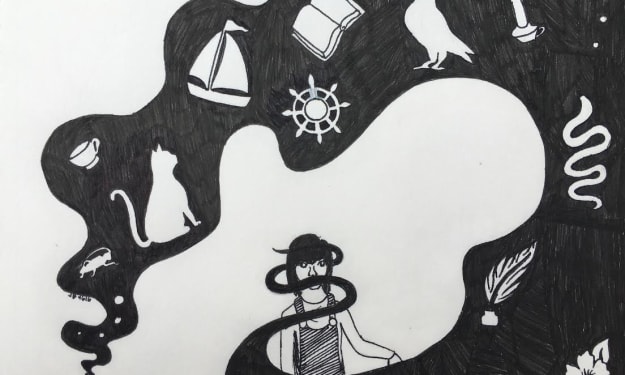Pacifier / Myths About It
all the truth about pacifier

1. How the pacifier appeared
From the beginning, people used various objects to soothe children: rags soaked in water and honey and beads made of wood, stone or bone. In 1901, Christian Meinecke patented an invention that was a kind of ancient pacifier: a rubber nipple attached to a disc to prevent swallowing.
Other inventors followed who created variations, including the addition of a ring so that the pacifier could be easily removed from the child's mouth. But these forerunners of today's pacifiers were processed with sulfur, which made them smell very bad, and were often painted white, lead-containing paint.
2. What are the benefits of pacifiers
Soothing your baby is not the only benefit of using a pacifier. Studies show that it can help reduce the risk of developing diseases and may even help the breastfeeding process:
● Using a pacifier when trying to put a child to sleep or when sleeping can reduce a child's risk of developing subtle infant death syndrome (SIDS), according to a study published in the journal Maternal and Child Health.
● Mothers who are at high risk for postpartum depression will breastfeed more easily if the baby uses a pacifier, according to a study published in the Journal of Human Lactaction. If the baby cries less, mothers will feel more comfortable and calmer, so, by default, they will breastfeed more easily.
● Distract from stimuli that can be stressful, such as vaccination or other painful procedures. If your baby focuses on using a pacifier, he will not feel the pain as well.
● The pacifier can stimulate the development of premature babies. A study published in the Cochrane Systematic Review showed that premature babies who use pacifiers spend less time in the hospital and learn more easily from bottle feeding.
The pacifier will soothe the baby during the flight: by sucking, a movement of the jaw is created which causes a change of the middle ear, where the child can feel pressure when the plane takes off or lands.
3. What are the disadvantages of the pacifier
Although a pacifier can support the child's development, its use also comes with disadvantages and it is good to be informed:
● Prolonged use of the pacifier can affect the shape of the teeth and mouth. The jaw and tissue around the teeth are very malleable and constant use after two years, but especially after four years, can cause the development of an abnormal bite (malocclusion).
● Increases the risk of developing ear infections, according to a study published in the journal Pediatrics. When a baby sucks or swallows, there is a change in the pressure behind the ear and fluids can reach the middle ear, where an infection will occur.
● Increases the risk of excessive weight gain, according to a study published in the journal Child Obesity. Children who used a pacifier after the age of four months had a 10% higher risk of being overweight by the age of one year, compared to those who did not use one.
4. Things you didn't know about pacifiers
If you are preparing to become a parent for the first time, you are probably just now learning what it looks like, how it is used and when a pacifier is needed:
● There are different shapes of pacifiers, the most popular being the butterfly type and the round one. It is your choice, but if the baby is still breastfeeding, he will prefer the round one, because it will touch his nose, just like when he is breastfed.
● Pacifiers come in different sizes, so you should always be careful to choose the size for the right age category, to avoid possible problems with the jaw or teeth.
● Make sure the pacifier is made up of a single piece; if there are small, removable parts, the baby can swallow them.
● Do not allow the baby to use the pacifier permanently, but only when it cannot be calmed otherwise, before bed or in stressful situations.
5. Myths about pacifiers
Due to misinformation, pacifiers are often shrouded in mystery: there are many myths about their proper use. We explain below which myths are true and which are not.
Myth 1: Pacifiers need to be washed frequently
TRUE: After multiple uses, the pacifier becomes full of bacteria and even mold, because it is almost always wet. To get rid of this problem, the pacifier should be washed with warm water and soap daily or every time it is dropped on the floor. For reasons of hygiene, the pacifier should be replaced at least every two months.
Myth 2: Pacifiers always cause problems with your teeth
FALSE: As long as the pacifier is not used permanently - only when the child needs relief - and rarely after the age of two, the child will not have problems with dentition. If you use it often after the age of two, there is a risk of forming an abnormal bite.
Myth 3: Pacifiers should be introduced at birth
FALSE: Even if a pacifier can help the baby, it is not necessarily necessary; he knows instinctively to suckle from the breast, and the pacifier is indicated only if he needs relief.
Myth 4: Pacifiers should be soaked in honey or alcohol to calm the baby faster
FALSE: You should not soak the pacifier in honey, water with sugar or alcohol. Sugar water can lead to cavities, honey increases the risk of botulism, and alcohol consumption at this age can have negative effects on the child's health even in adulthood.
Myth 5: Parents should bribe their children or make them feel guilty about giving up pacifiers
FALSE: Most children will naturally give up the pacifier either because they will no longer need it or because they will go to the nursery and notice that the other children do not use one. If the little one feels stressed to give up the pacifier, he will most likely want to use it even more.
Using a pacifier is not mandatory, but it can help calm the child and distract him when he is exposed to stressful stimuli. At the same time, the pacifier can bring disadvantages if it is used in excess, so the choice is up to you.
About the Creator
Maria Ostasevici
Communication and public relations student, Moldova
Instagram profile: maria.ostasevici;
mother of two awesome Dobermans.
BEST VERSION OF YOURSELF- THAT'S TRULY EPIC






Comments
There are no comments for this story
Be the first to respond and start the conversation.